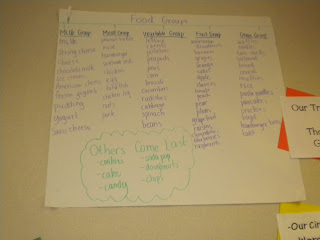Below are some examples that we did together as a class.
A tree map we completed after studying the desert, arctic, and rainforest habitat in Science.
A double bubble map comparing and contrasting the desert and arctic habit.
A tree map made during reading that shows which words fit under the different sounds that the inflection /ed/ makes.
A double bubble map comparing and contrasting the story Oliver Button is a Sissy and Amazing Grace. This is originally a schema lesson from the book Reading with Meaning that uses a venn diagram to show the text-to-text connection. Instead of the venn diagram we used a double bubble map.
A flow map to show the sequence of events in our Harcourt story, On the Way to the Pond.
A tree map to show the different food groups and food that fit into each group during our food group unit in health.
A circle map for words with the /ar/ sound.
A circle map that shows everything we learned about when we studied Ancient Egypt in Social Studies.









these are great!!! we just studied ancient egypt too, i need to do this!
ReplyDeleteThanks Jess! Thinking maps are a great way to organize thinking and I like them way better than the traditional graphic organizers. Hope you have fun celebrating Zach's graduation this weekend!
DeleteCan you tell me more about what is on the outside of your circle and double bubble maps? Are the 4 corners where the information came from? Love these ideas and looking forward to implementing them in my classroom!
ReplyDeleteThanks for stopping by! You got it - on the outside of the circle and double bubble map - they call it the frame of reference -we did put down where we found the info. It doesn't have to only be 4 items, but it just worked out that way. Thinking Maps are awesome. I hope you enjoy using them in your classroom!
DeleteJordan
Team V's Second Grade Fun